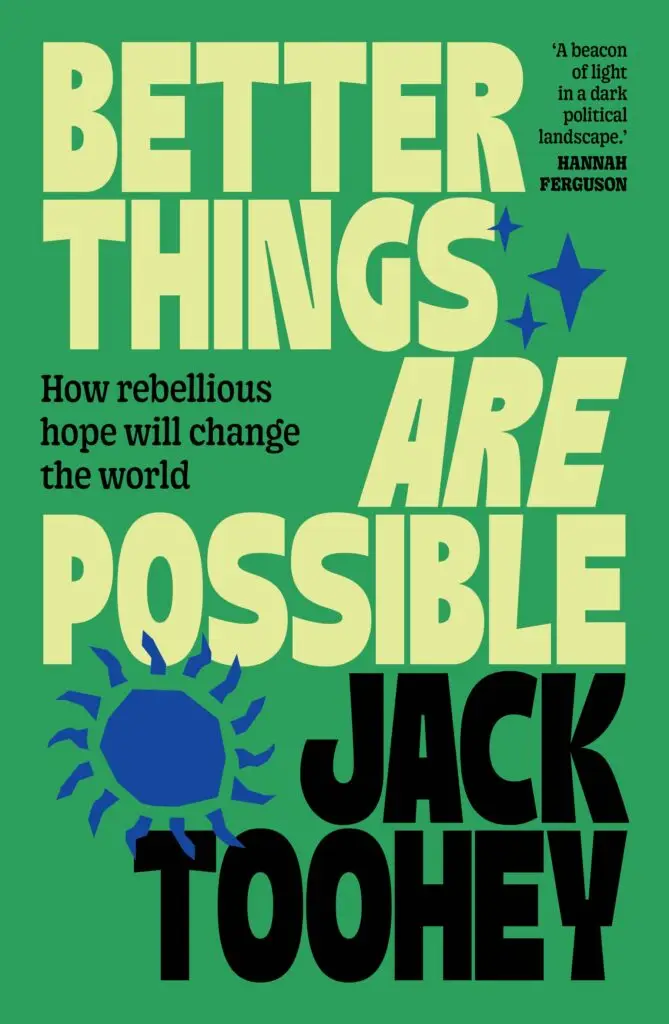Chapter 15: YES, ALL MEN
The Man Box, the patriarchy, toxic masculinity—whatever you feel comfortable calling it—hurts all of us men, crushing our individuality and constraining our wellbeing. While ‘not all men’ actively perpetuate the harmful behaviours it breeds, we do possess a collective responsibility to change the culture that enables them to persist. Culture, after all, is the sum of all norms found in human societies. You and I both exist as humans in these societies, and therefore we have the power to decide what is normal and accept- able and what is not.
In Australia, masculine norms are often reinforced by the capitalist values of individualism, competition and ‘hard work’. Men socialised within this framework are encouraged to prioritise work over vulnerability, self-care and meaningful emotional connections. Breaking down these norms, and the peer cultures that sustain them, is crucial to progressive change. Even among those of us who, at a conscious level, believe in gender equality, ingrained attitudes can persist beneath the surface, without our awareness.
Trad-life
Some men idealise 1950s-style family structures and gender roles, viewing them as a solution to perceived encroachments from feminist movements that threaten male authority and privilege. This nostalgia, however, is misplaced, and ignores several realities, both past and present. While some men weaponise this narrative to justify modern misogyny, others may genuinely believe life was better for both men and women in this era—seeing it as a time of stronger family values, clearer gender roles and less social turbu- lence. It’s important then to note that the idealised image of the 1950s gender roles glosses over the realities of oppression, limited opportunities and financial dependence that characterised much of women’s lives in the mid-20th century. It fails to acknowl- edge how capitalism has always relied on women’s unpaid and underpaid labour to sustain itself. The patriarchal dividend that allowed some men to thrive came at a steep cost to the freedom and dignity of others.
Despite the enforcement of patriarchal roles, men in the 1950s were not immune to mental health struggles. The strict gender norms of the era, demanding stoicism and emotional suppression to an even greater degree than we see today, likely exacerbated untreated mental illnesses and led to suicides—many of which may have been reported as accidents due to stigma. This suggests that the pressures on men’s mental health are not a new phenom- enon and have persisted across decades, regardless of societal changes brought about by feminism. In fact, contrary to nostalgic beliefs about the past, reported male suicide rates have remained alarmingly consistent over decades. According to the Australian Institute of Health and Welfare, the suicide rate among men in 1952 was 18.7 per 100,000 people—nearly identical to the 2022 rate of 18.8 per 100,000. If suicide rates have remained consistent even as feminism has grown and evolved, how can it be to blame? You know what else has remained consistent in this time? Patriarchy. The sense in some masculine circles that feminism has gone too far, and has become the source of all men’s ills, is also completely misguided given how far we still have to go.
It’s true that women now make up nearly 60 per cent of domestic university students. But this educational progress hasn’t translated to equal representation in leadership positions—only 9 per cent of CEOs of companies in the ASX300 are women. The federal government’s 2024 Status of Women Report Card shows that women still earn less than men, perform significantly more unpaid care work and are vastly underrepresented in political spaces, where power remains overwhelmingly male.
So, while progress has been made, the idealised 1950s structures some men long for actually continue to shape our society today. Great news for men yearning to live out their Happy Days fantasies, bad news for the rest of us.
The Manosphere
Why do these fallacies about our past and present persist? The rise of social media has given a new generation of self-proclaimed ‘alpha male’ influencers an outsized voice in shaping modern ideas about gender. What started as isolated figures pushing traditional masculinity from the fringes of the internet has now coalesced into a much more pervasive movement, often referred to as the Manosphere.
To understand more about how these harmful messages have gained mainstream traction, I turned to Tarang Chawla, a writer, lawyer and activist. Tarang’s journey into activism began with personal tragedy—the murder of his sister Nikita in 2015 by her controlling partner. She ended their relationship. He ended her life. Since that horrible loss, Tarang has become a powerful voice in the fight against domestic violence, earning numerous accolades for his work. When I asked Tarang about the role of social media influencers in perpetuating harmful gender roles, he didn’t mince words. ‘These figures are essentially grifters,’ Tarang explained. ‘They’re exploiting men’s vulnerabilities for their own social clout and capital gain. Take Andrew Tate, for instance. He markets himself as a self-made success, pushing courses and memberships designed to exploit men who feel disillusioned or powerless.’
Tate proudly calls himself a misogynist. I proudly call him that too. He’s also alleged to be a sex trafficker, rapist (of both adults and minors), money launderer and orchestrator of organised crime. He is a man with absolutely no business shaping conver- sations about masculinity, mental health or gender. Tate preaches men’s dominance over women, rejects consent and encourages violence. The version of masculinity he promotes causes direct harm to the men who follow him, while encouraging them to perpetuate harm onto others.
Tarang described how Tate and others like him tap into natural human reactions of insecurity, loneliness and frustration. ‘They sell a hollow version of hyper-masculinity that’s all about power, wealth and control,’ he said. ‘But underneath all of this bravado is messaging that’s not actually in men’s best interests.’ The power of the medium they use to spread these harmful ideologies cannot be overstated either. As Tarang explained, ‘Social media algorithms play an insidious role in spreading misogynistic content and radicalising men. Platforms like YouTube, Instagram, TikTok and X thrive on engagement. In practical terms, this means content that provokes outrage or reinforces divisive ideas is prioritised.’
Young boys are fed content that may start off a little contro- versial, but soon becomes more extreme. A teenager might watch a video on how to build muscle, boost confidence or improve his dating life. The insight isn’t great—some boast about ‘dominating the competition’ or frame women as a ‘prize’ to be won—but at first glance, it’s just another boisterous influencer giving life advice. Then, the algorithm kicks in. Soon, he’s seeing videos about how ‘women don’t respect nice guys’, ‘feminism ruined women’ and ‘men are the truly oppressed class’. These algorithms create the Manosphere echo chamber, where unhealthy ideas about male superiority and female subordination are normalised and even rewarded, as the influencers themselves are encouraged to become more extreme and inflammatory to court more engage- ment. And so, young men are drawn into increasingly radical, damaging narratives about what it means to be a man, and how to treat women.
But it’s not just about radicalisation. The reality we’re confronting in Australia is that ‘ordinary’ men’s collective inaction also allows a cycle of sexual, family and domestic violence (overtly promoted by these content-creators) to proliferate across society. Too many of us disengage, subconsciously insisting these violent stories of abuse are ‘over there’ despite stats showing how alarm-ingly close to home they really are. Others try to find solace in offering ‘thoughts and prayers’ for victims. Worst of all, we demonise perpetrators as isolated monsters, rather than understanding them as the inevitable products of toxic cultural systems that breed and encourage their violence. Nothing to do with us at all. But it’s not a matter of if this violence will touch your life, it’s when. And the questions any man must ask himself are: will someone I know be the victim? Will someone I know be the perpetrator? Could it be me?
Ultimately, it is on men to have the maturity to recognise that we’ve all been influenced by patriarchal narratives in subtle and not-so-subtle ways, no matter how ‘woke’ we might believe we are individually. It’s about having the humility to take a step back and look at the bigger picture and the forces shaping us culturally. And that means having a painful conversation with ourselves about the negative ways we might have acted in our past as a result of these forces.
I asked Tarang how men who are already immersed in the toxic narratives of hyper-masculinity can begin to unlearn harmful behaviours. ‘It starts with recognising they’ve been duped,’ he said. This can be an uncomfortable realisation, but it’s an important one. ‘Figures like Tate are selling a fantasy—not a pathway to genuine confidence or fulfilment. Men need to understand that real strength lies in emotional intelligence, empathy and mutual respect, not in dominance or material success at the expense of women.’
His insights, of course, don’t just apply to the smaller group of men who have been radicalised online—they apply to all of us. Tarang emphasised the importance of surrounding ourselves with healthier narratives and seeking out positive role models: ‘Supportive environments, whether through therapy, men’s groups or educational programs, can provide the space to dismantle these toxic beliefs and build a healthier understanding of masculinity.’
The truth is, the roots of sexual and physical violence perpetrated by men can be traced back to our failure as a society to comprehensively teach boys true empathy and respect from an early age. As my friends at Teach Us Consent put it: ‘To help prevent sexual assault, we must embed empathy and respect in boys and men to a far higher degree than we embed in them a sense of entitlement to others’ bodies.’
Power and privilege
Confronting toxic masculinity does not mean shouldering shame. Rather than oscillating between guilt and denial, or reflexively asserting ‘not all men’ to derail conversations, a more construc- tive approach is to bring our awareness of patriarchal systems to our reflections on our own experiences and past behaviours. By understanding why we’ve felt or acted the way we have, we can move through any shame we might be carrying.
This will undoubtedly allow us to make positive changes in how we act in the future, and free us to encourage others to do the same. Because at the end of the day, real change won’t happen through each man just trying to be a little bit better, quietly and individually. It will happen when we band together and start dismantling the Man Box itself. This is a collective responsibility, not an individual burden, and the benefits will be shared among all of us as well.
Practically, dismantling the Man Box can be as simple as calling out language such as ‘boys will be boys’, ‘man up’, ‘grow some balls’, ‘don’t be a pussy’, ‘boys don’t cry’ and ‘man of the house’ when you hear it—and having no tolerance for what is often excused as ‘locker-room banter’, the kinds of conversations that don’t bear repeating in these pages. More than this, though, we need to reflect, to listen, to conscript ourselves as allies and actu- alise our role in the fight for gender equity.
We need to reject the myth of a golden age of masculinity and acknowledge the ways in which traditional gender roles have always been damaging, even as they have granted some men power and privilege. It means embracing a more expansive, healthier vision of manhood that allows for vulnerability, emotional expression and mutual care and support. By doing so, we can create a society that benefits not just men, and not just women, but everyone, fostering equality, reducing violence and promoting mental health for all.


